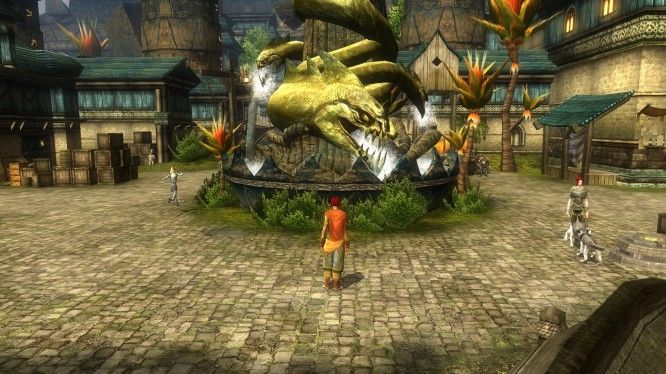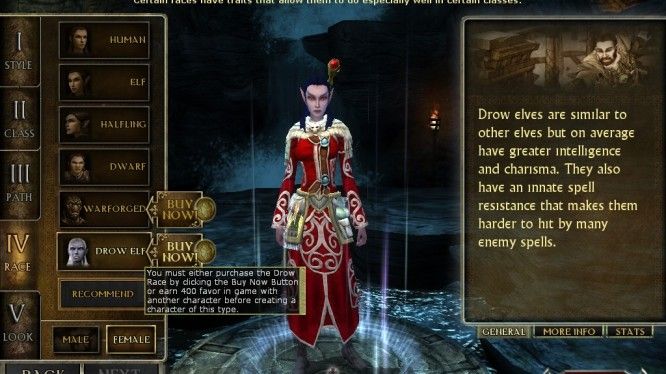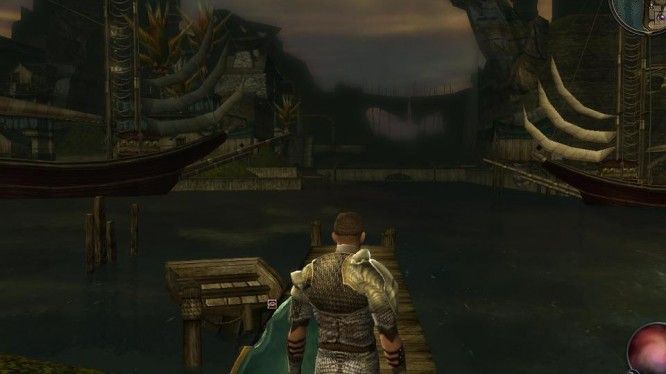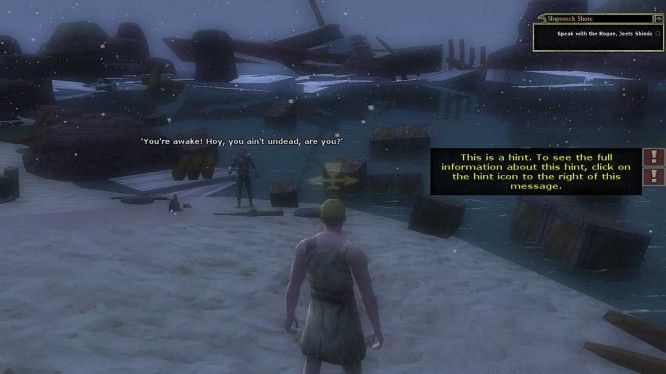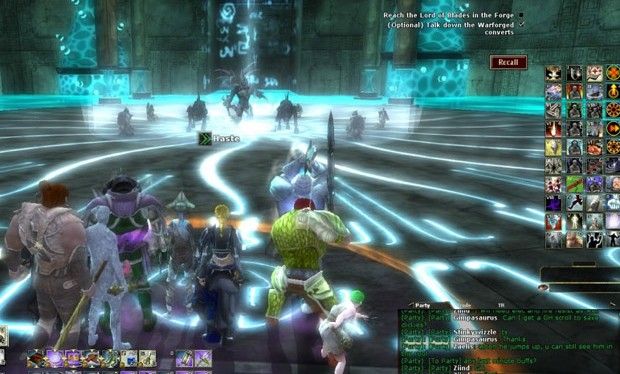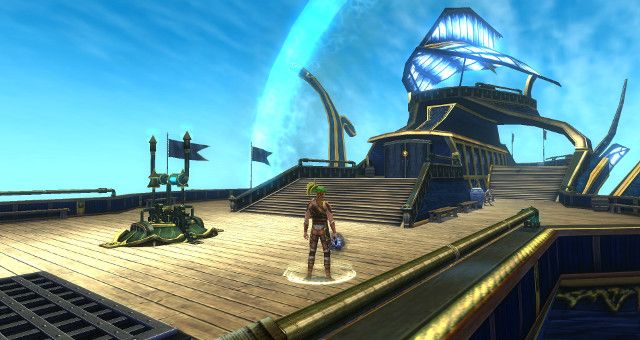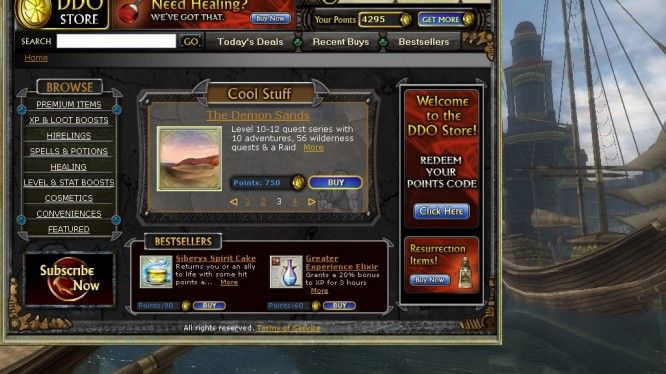Many a long night has been spent in a dark basement, rolling the forbidden polyhedral die and casting spells that no one in the mortal world could even dream of. Harsh landscapes have been traversed and deep dungeons have been explored by those dreamed of living in another world and embarking on untold of adventure. Those were the days when such basement meetings were widely frowned upon, and those who partook in the art of Dungeons and Dragons were widely shunned or treated as pariahs. Does anyone remember the great Tom Hanks scare? What about the ridiculous ‘Dark Dungeons’ Chick tract that led many to believe D&D was nothing more than a tool of the devil?
Those days have long passed and the mystery of Dungeons and Dragons has passed into legend. These days tabletop gamers meet in the open, exploring dungeons with friends and strangers alike. Lately, however(as of the last fifteen years), the RPG genre has moved online, and as a result, the game has changed entirely. You can only imagine the happiness and joy expressed by old school gamers when Dungeons and Dragons Online was released in February of 2006, even with a subscription fee. Now that the game has gone free to play, players around the world have been given the opportunity to experience Eberron in all its tinkered glory.
DDO is a different type of MMO, to say the least. Rather than providing even the illusion of an open world, DDO gives players the city of city of Stormreach to explore. It’s not the biggest world, by any means, but D&D was never really about traversing an open world, was it? Fortunately, Stormreach is big enough for anyone to explore, though there are some horrible design choices going on. The one I find most annoying is the transition between sections. Now come on Turbine, if Blizzard can create an entire world with seamless transitions between regions, surely you can do the same thing within a single city. No? Well, alright then, I was mistaken.
There are numerous upsides to concentrating on a single city rather than an entire world, namely the detail that can go into it. Seriously, the detail in this game is flat out amazing, even for a game that was made all the way back in 2006. Naturally they’ve been updating it, but the core of the game is still roughly the same, and to be perfectly honest, I prefer it that way. It runs well, it installs quickly, there are dragons, so what more could a person ask for? Okay so you probably want to know what the gameplay is like, and I’m going to get to that now.
Obviously you create a character of your choosing, the classes being your standard DDO fare. There are currently 15 classes in the game. Ranging from Artificer to Fighter and almost everything in between. Some of these classes are locked but can be opened by purchasing them in the cash shop or by playing a monthly subscription fee of $14.99. If the class you want to play is unlocked, great, you just saved some money there!
The game starts out on Korthos island, a nice little place if we do say so ourselves. I’m going to be perfectly honest here, DDO was one of my first true MMO experiences and I was absolutely amazed at the combat system. Previously I had played games like Flyff and Archlord, so you can understand why I was in awe that you could simply click to swing your sword rather than clicking an action on the hotbar. In fact I suspect that DDO was one of the first games to actually use this system(no, we’re not forgetting you Hellgate London, we’re just living in denial). There IS a hotbar, of course, but your primary attack is tied to your left mouse button and works in real time.
Equipping items works much the same as any other MMO, though in this case the inventory window is attached to the character window. It sort of saves time if you think about it. Once your character is equipped with whatever you’ve managed to find in various barrels or from assorted quests, you’ll be ready to conquer the tutorial quest which takes place on what seasoned players like to call ‘Snowy Korthos’. There are a lot of quests to be done on Korthos, of that there is no doubt, but you will find that you need decent groups to finish all of the content on all difficulty levels. Seriously, I went through one of the harder dungeons on Elite difficulty. I did it, but I was seeing a shrink for years afterward.
Once you wrap up the main questline, either alone or with others, you will be moved to ‘sunny Korthos’, which provides you with more players, more grouping opportunities, and less ice to walk on in the bay. Once you finish Korthos you can move on to Stormreach, though you can do that at any time by talking to the harbormaster on the docks. Additionally, unlike most MMORPG’s, you will have the opportunity to return to the tutorial area any time you wish. Though aside from finishing up a few quests, there is little chance that you will actually want to see that wretched place again.
Players just coming in from other MMORPG’s will probably find themselves a bit confused about the leveling system, and with good reason. As a seasoned MMO player your first instinct might be to rush off into the wilderness and attempt to kill fifty of everything you see. Fortunately I’m here to tell you not to do that. In DDO, you only gain experience for completed quests, generally dungeons. At the end of each dungeon is a chest, which contains your reward. Unlike most MMO’s, you often have to choose which reward you want rather than taking everything, and if you are attempting to level up a guild, you might want to choose guild renown over anything else.
The dungeons, as you would expect, will require balanced parties, especially in the higher levels. You will need a thief to disarm traps, a warrior to tank, healers to keep the party alive, and virtually any other MMO cliché you can think of. Yes, this is a cliché, but it’s also D&D; the game that started it all.
You can choose to take on these dungeons with followers, with random group members, or with your guild. Should you choose to go with your guild, you will gain more satisfying and lasting perks. Eventually, your guild may band together to buy an airship, which is a perk I’ve only seen in DDO. Airships function much like guild halls, but, as you would expect, they float in the air. While DDO is a game all about grouping, it really seems to cater to the single player experience in the strangest ways. For example, I couldn’t see the airship at the dock until I joined a guild, and it was their specific airship, not a generic one. I imagine that everyone sees the airship that is owned by their particular guild, which makes me wonder if all of the airships are simply stacked above the city with parameters that make them visible or invisible depending on who is looking at it and what guild they happen to be in.
On the topic of airships, they’re not cheap by any means. Buying one with gold will require lots of grinding, and at some point you may find it better to simply invest in Astral Shards so that you can buy a premium model.
While airships act as guild halls, they have a few other purposes. For one thing, they are designed to carry the guild to various spots around the ‘world’, though the world is mostly instanced. Let’s say for example you want to take your guild to a raid instance but you don’t want to cross several zones to get there. You simply speak to your airship captain and tell him where you want to go. You will be taken to the proper instance, complete the raid, and re-board the airship. In addition to that, you will find plenty of NPC’s that provide buffs, along with a guild chest where everyone can share loot or equipment, similar to a guild bank. If you’re going to have a guild, an airship is a must.
So here we are at the very bottom this article and you’re probably wondering what the ‘free to play’ rub is. Every free game has one, except maybe Rift, or Tera, or Aion, but we’re not here to talk about those today. In DDO there is a LOT of content that you cannot play as an F2P player. There are dozens of dungeons that you can play through at each level, but leveling up becomes a bit of a pain unless you are willing to invest either a considerable amount of money buying adventure packs. In most games this would be angering, but I don’t mind it for one very solid reason: This is Dungeons and Dragons!
Okay, let me try to explain what I mean here. With most MMO’s there might be a lockout on equipment or even a level cap to discourage F2P, but with DDO, there was already an established system in place. Think about it, when you want new adventures for the pen and paper game, you would be required to purchase modules. Of course you could use your imagination and create your own adventures, but it was always more fun to play through the modules that others had created, wasn’t it? In DDO you have the opportunity to purchase adventures of many different types, but you can always choose those tailored to your tastes. For example, if you would rather delve into the deepest dungeons, there are adventure packs available to you. If, on the other hand you want to spend your time on the beaches or the high seas, there are adventure packs for you as well. Ultimately, you play where you want to play, but if you are someone who enjoys a bit of everything, there is always the $14.99 per month subscription.
It IS possible to enjoy the entirety of the game as a free player, though it will take years of grinding, and you will need to accumulate tons of favor points. These points, awarded for completing certain tasks, will be given to your character, and at a certain amount will be converted into turbine points. You will then be able to purchase adventure packs on the market. The problem with this is that you will need to use several different characters to re-run the same dungeons and instances so that you can continue earning favor points. Has it ever been done completely? Actually yes, but it is very tedious, and most people are not a huge fan of it. Still, for a free to play game, the restrictions really aren’t that bad.
The game has been improved significantly from its first release, one of the most notable additions being a dungeon finder which allows you to find groups already engaged in adventures. There was a time when this was much harder and groups were formed manually, which saw a large exodus of players near the end of 2006. Now that it has been fixed, it is much easier to find a good party.
Expansion packs, such as Menace of the Underdark have added numerous content updates, from new dungeons, to the now indispensable ‘Epic Destiny’ system which permits your character a dual specialization. Because it is an old game, many players have moved on to greener pastures, some blaming dated graphics, other calling out the now awkward mechanics. Still, there are people playing now, and new players joining every day, even if to only stand in the shadow of this behemoth for a few moments before uninstalling and moving on to another game. It is my belief that there will always be a core of player sitting patiently and waiting for group in the realm of Eberron, the hub of D&D, and those who will return to adventure for the newest content or latest expansion pack. D&D will never die.
Overall Rating: 9 out of 10
Pros:
Quick Grouping
Tons of Content
Great Guild System
Cons:
I don't get to roll a D20
Bards can't play in the town square for money
Must pay to unlock elite difficulty on dungeons

